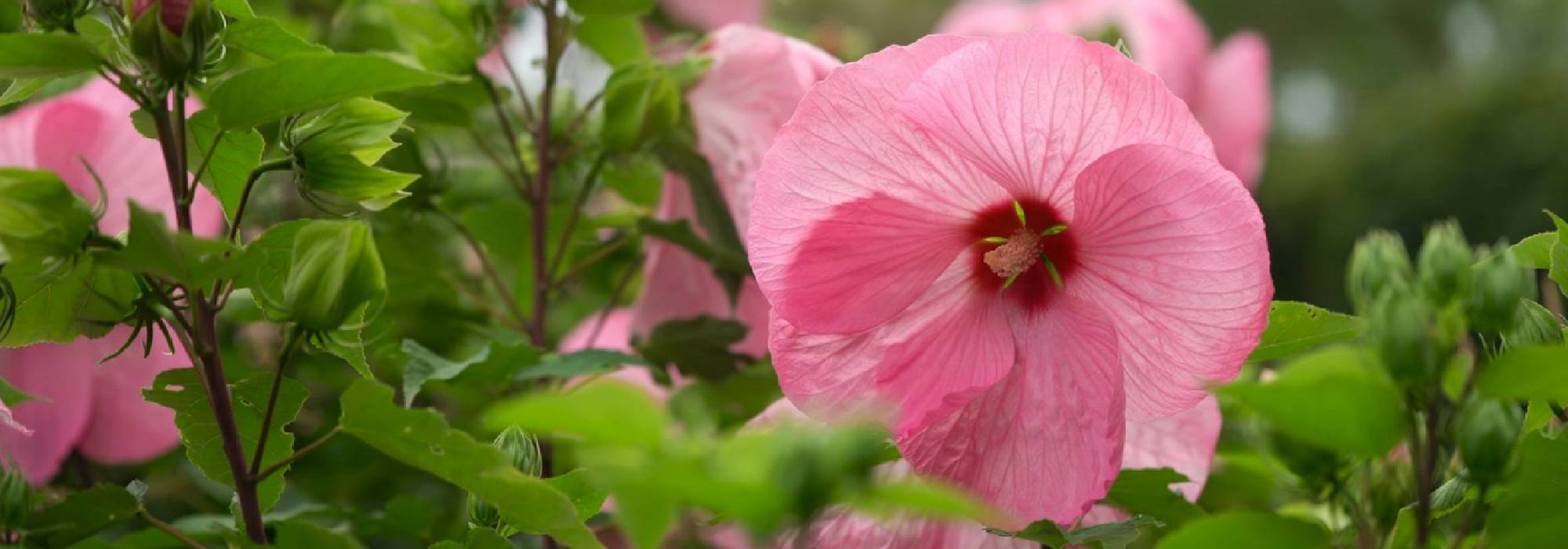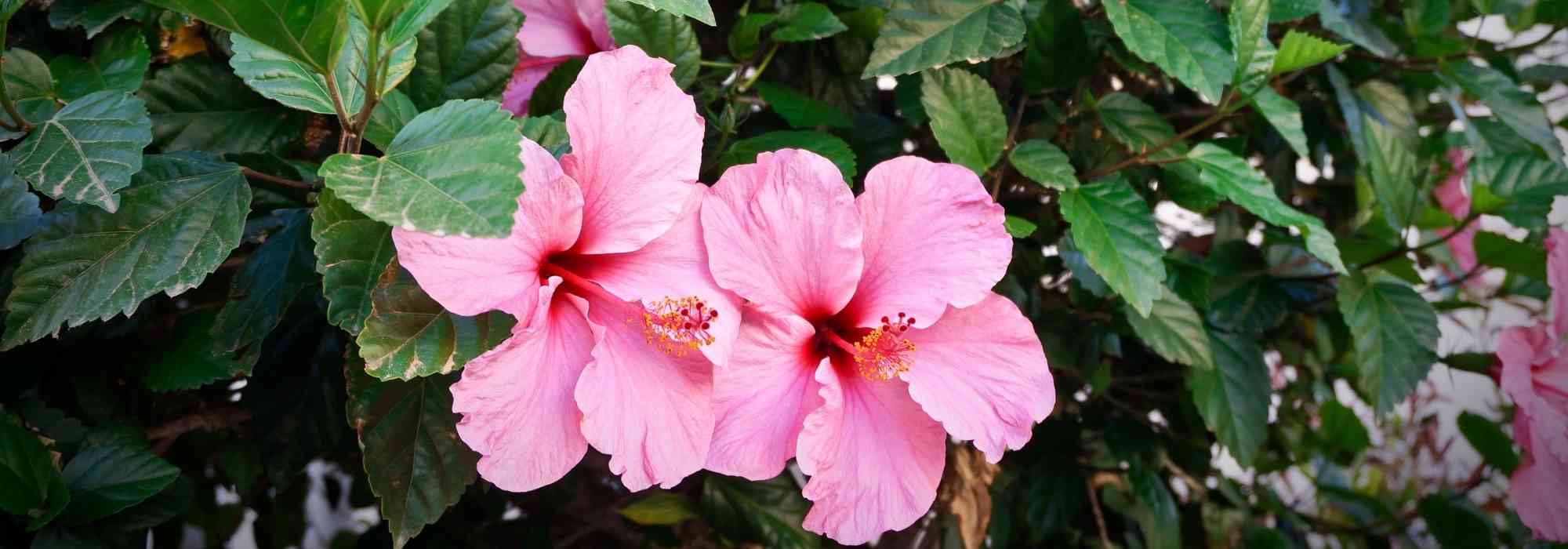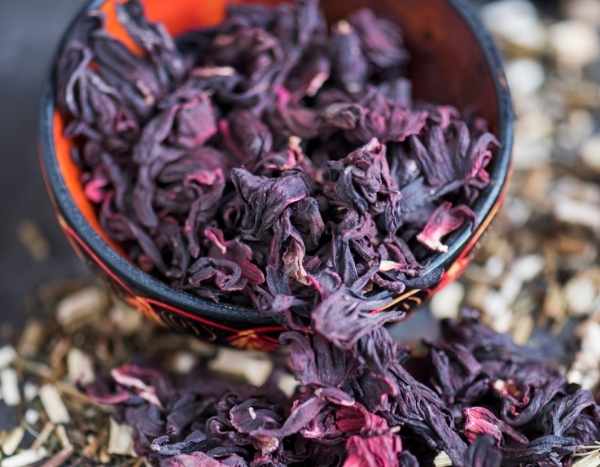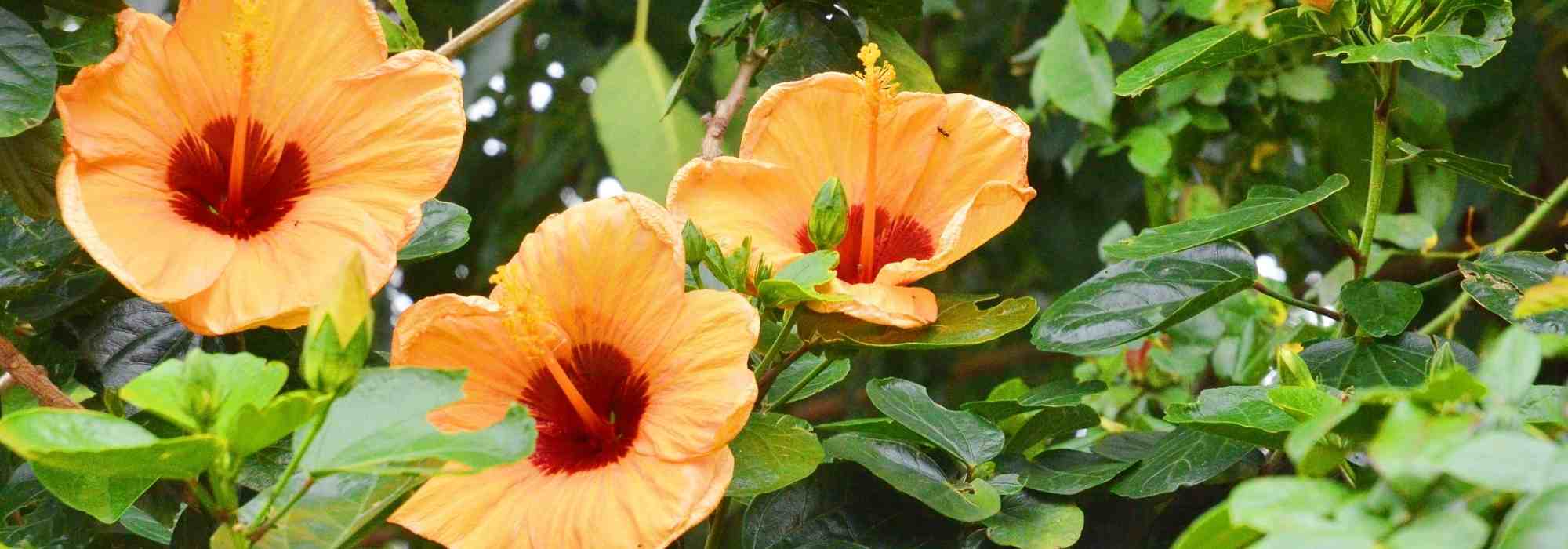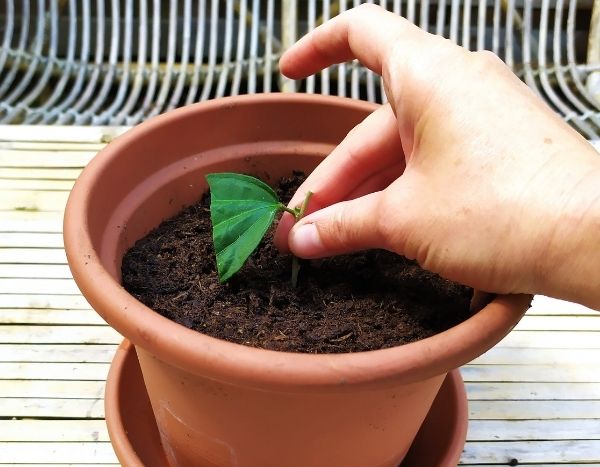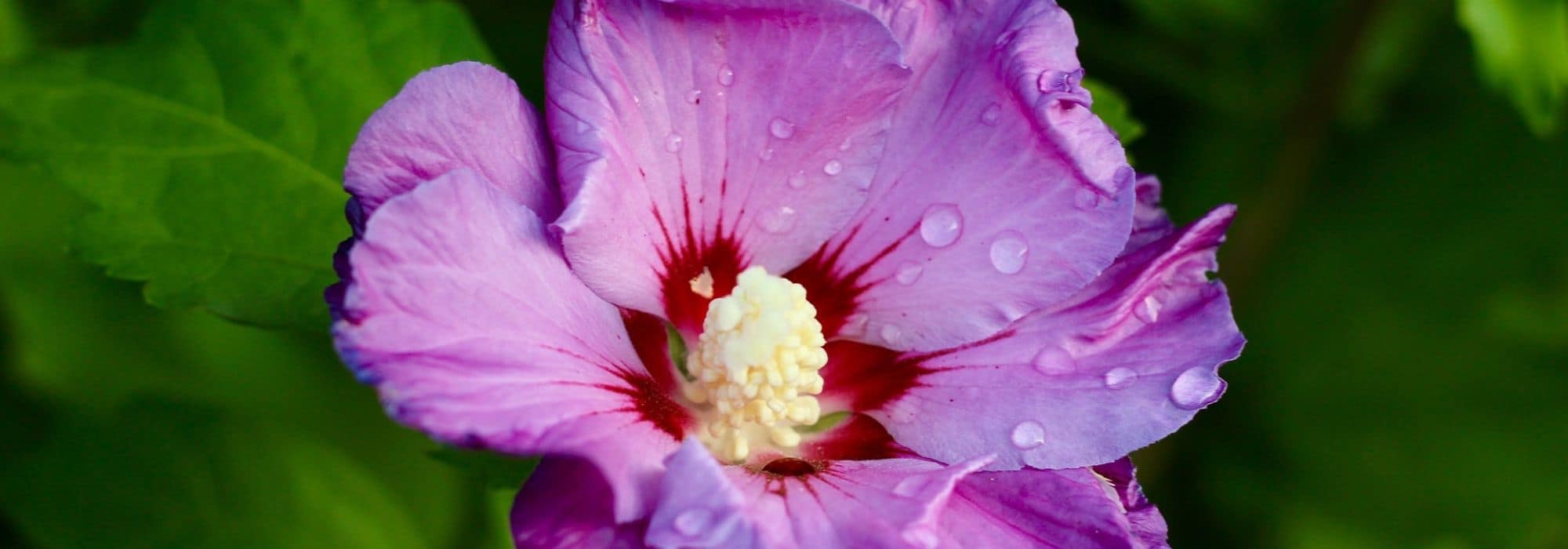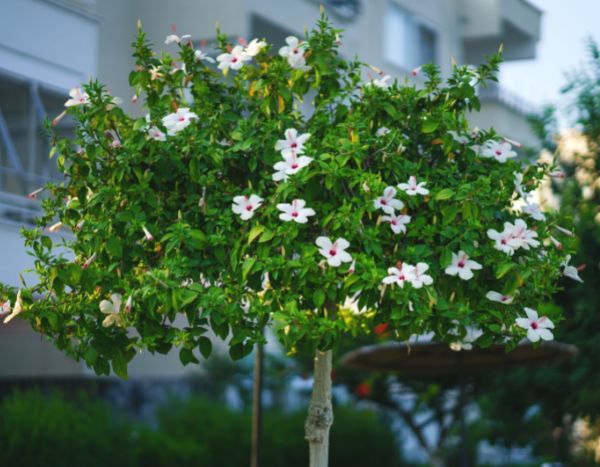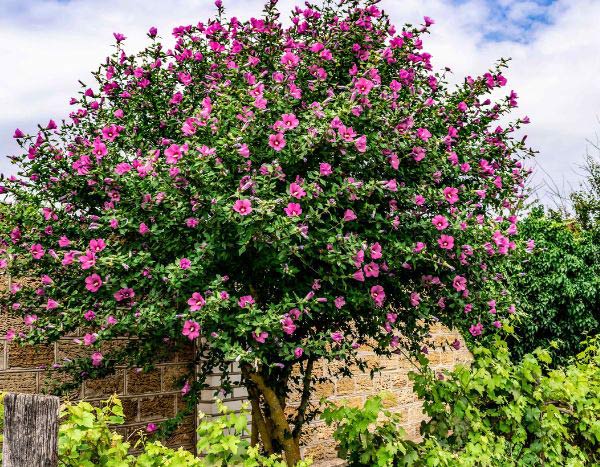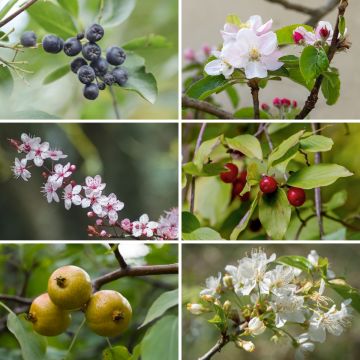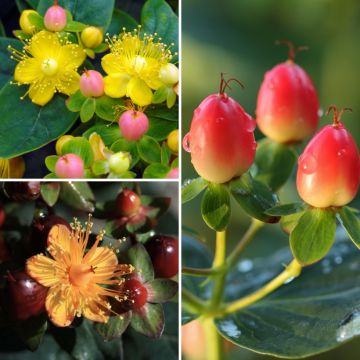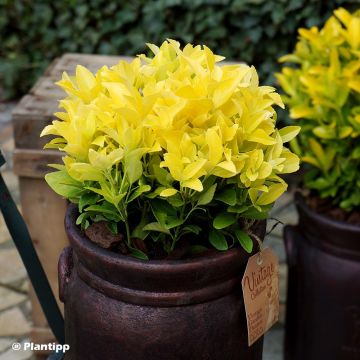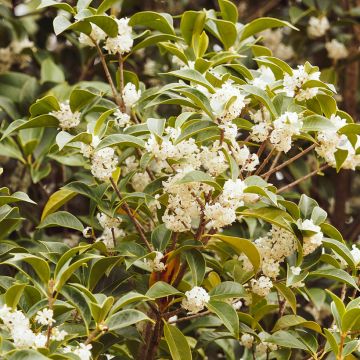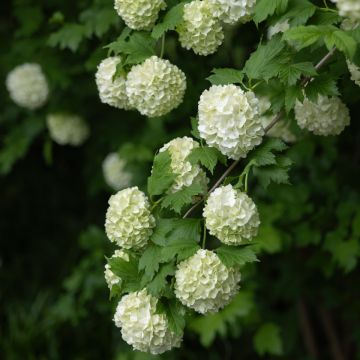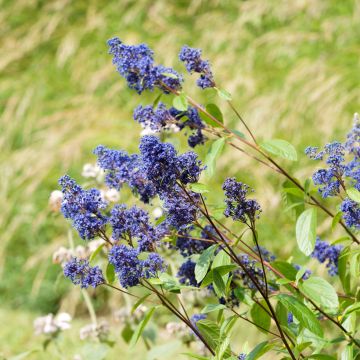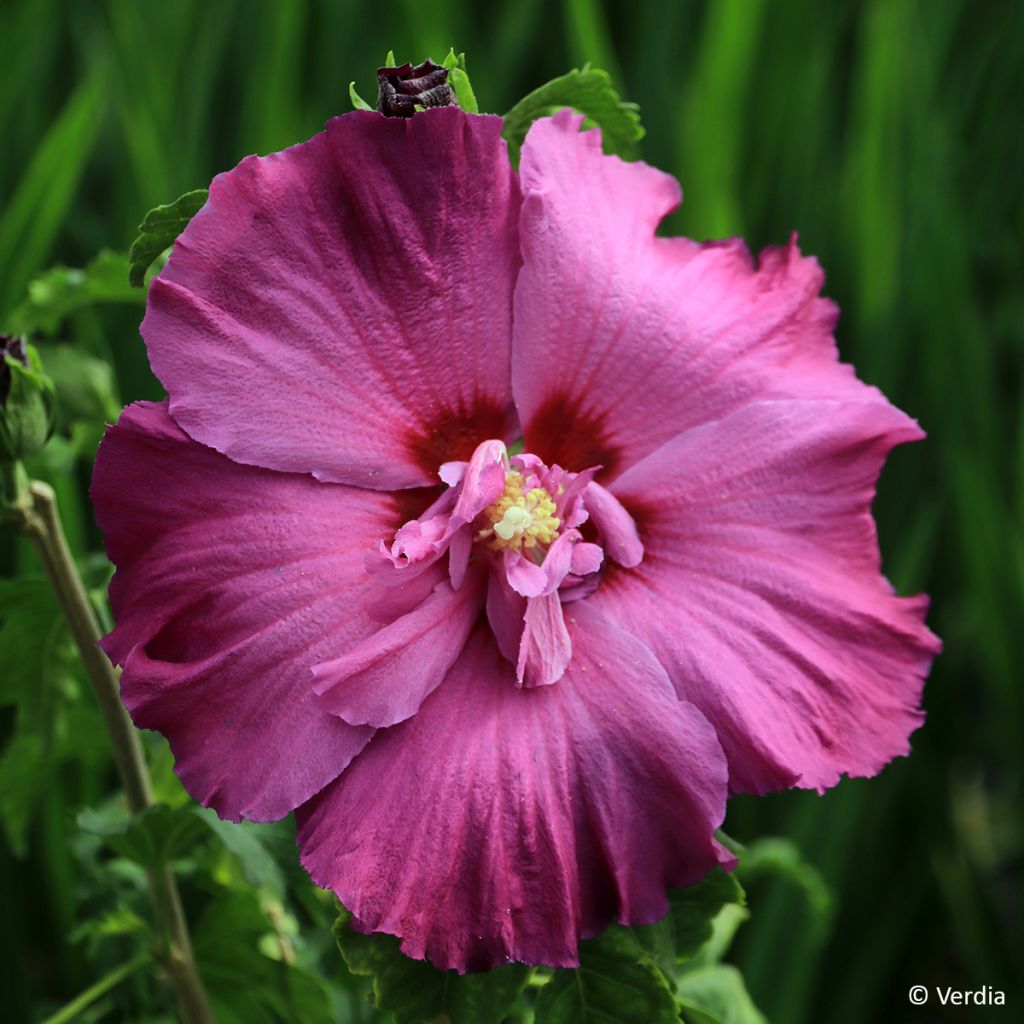

Hibiscus syriacus Sangria - Rose of Sharon
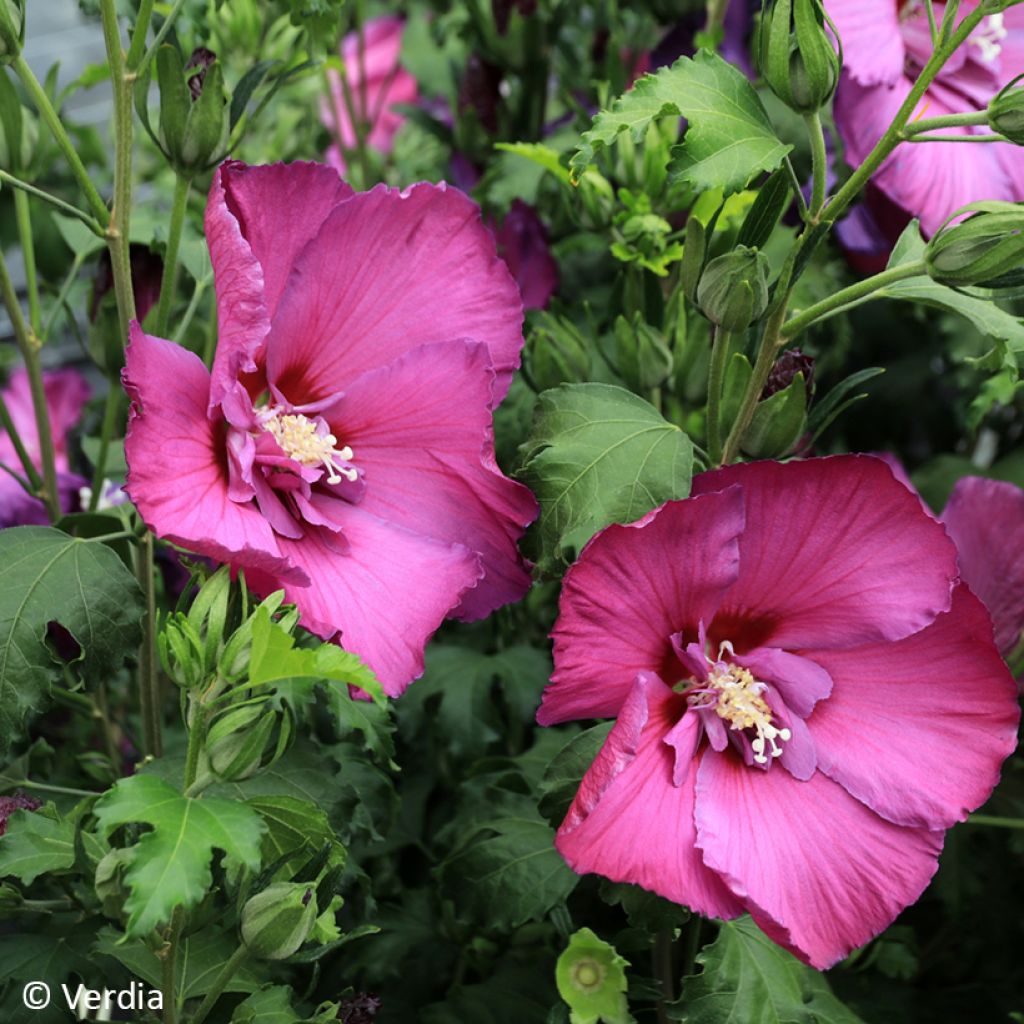

Hibiscus syriacus Sangria - Rose of Sharon
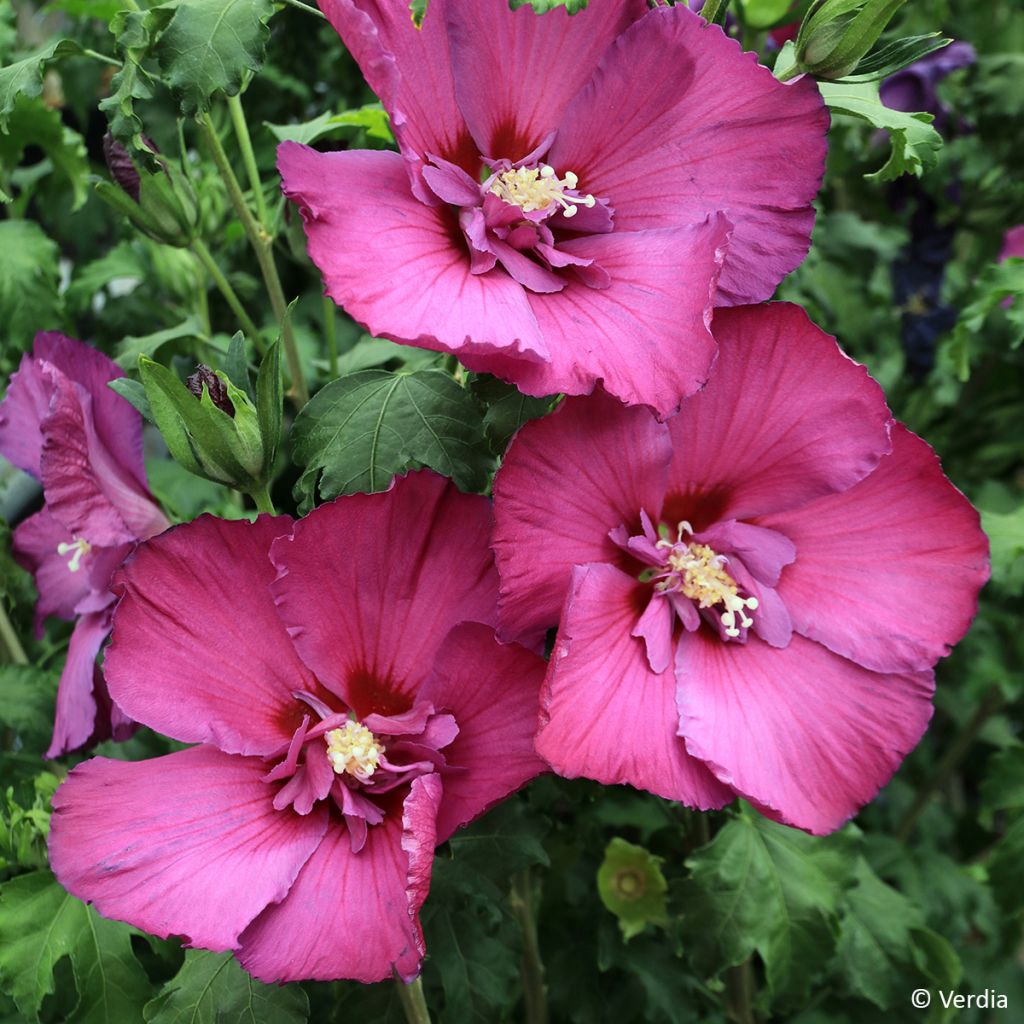

Hibiscus syriacus Sangria - Rose of Sharon
Hibiscus syriacus Sangria - Rose of Sharon
Hibiscus x syriacus Sangria
Common Hibiscus, Rose of Sharon, Syrian ketmia, St Joseph's rod, Garden Hibiscus
Special offer!
Receive a €20 voucher for any order over €90 (excluding delivery costs, credit notes, and plastic-free options)!
1- Add your favorite plants to your cart.
2- Once you have reached €90, confirm your order (you can even choose the delivery date!).
3- As soon as your order is shipped, you will receive an email containing your voucher code, valid for 3 months (90 days).
Your voucher is unique and can only be used once, for any order with a minimum value of €20, excluding delivery costs.
Can be combined with other current offers, non-divisible and non-refundable.
Home or relay delivery (depending on size and destination)
Schedule delivery date,
and select date in basket
This plant carries a 24 months recovery warranty
More information
We guarantee the quality of our plants for a full growing cycle, and will replace at our expense any plant that fails to recover under normal climatic and planting conditions.
Would this plant suit my garden?
Set up your Plantfit profile →
Description
Hibiscus syriacus Hibisa® 'Sangria' is a unique selection of rose of Sharon with an incredibly exotic appearance. Its large, silky-textured flowers in deep purple-pink with mauve highlights are adorned with small petals around a carmine-red centre. This fabulous flowering renews itself from summer through autumn. It is an easy-to-grow bush with a manageable size, perfect for small gardens and container cultivation. It can withstand temperatures down to -15°C and tolerates fairly dry summers.
Hibiscus syriacus, belonging to the Malvaceae family, is commonly known as rose of Sharon, Syrian ketmia, or Syrian hibiscus. This deciduous bush originates from East Asia, particularly China and Taiwan. Introduced to Europe via Syria, it is now widely cultivated as an ornamental plant. It has given rise to numerous cultivars and hybrids with closely related species such as Hibiscus sinosyriacus and paramutabilis.
The Hibisa® Sangria cultivar is part of the Hibisa® series, developed for its ease of cultivation and strikingly large, vividly coloured flowers. The foliage of Hibiscus Hibisa® (including the 'Cocktail', 'Blanco', 'Rosada', and 'Sangria' cultivars) is quite unusual. The leaves are often single but deeply lobed and finely toothed. The leaf is divided into 3 to 5 deep lobes with distinctly wavy or crinkled edges, almost palmate in appearance. The leaves measure between 5 and 12 cm in length and about 4 to 10 cm in width. Their texture is slightly leathery, and their bright to dark green colour provides a beautiful backdrop for the flowers. This foliage is deciduous, shedding in autumn and regrowing in spring, later in the season, as is typical for all syriacus varieties.
This bush has an upright habit, with erect branches forming an elegant and well-structured silhouette. The Hibisa Sangria variety reaches approximately 2.5 m in height and 1.5 m in width when planted in the ground, while in pots, it remains more compact, around 1.5 m tall. Its large, solitary flowers, growing in the axils of the leaves, measure between 16 and 20 cm in diameter and display an intense purple-pink hue, accentuated by a deep carmine-red centre. They often feature additional small petals at the centre of the corolla. The separate or slightly fused petals form a funnel-shaped corolla. At the centre, the stamens are united into a long tube surrounding the style. Flowering begins in July and continues until October, with ephemeral blooms constantly renewing themselves. Pollination is mainly carried out by insects. The stems are slender, grey, marked with white lenticels and distinct foliar scars. The taproot system, with a deep main root and lateral roots extending horizontally up to 1.2 m, provides excellent stability and drought resistance.
Hibiscus Hibisa® Sangria adds a stunning exotic touch to gardens or terraces. Plant it as a standalone specimen to showcase its extraordinary flowering, in a lush border, or in a large container near an entrance or terrace. To enhance its tropical appeal, pair it with decorative foliage such as the deep purple to black Colocasia esculenta ‘Black Magic’, or the vivid purple and red Castor Bean ‘Carmencita’. Complement with Hedychium coccineum ‘Tara’ for their exotic orange inflorescences.
Hibiscus syriacus Sangria - Rose of Sharon in pictures
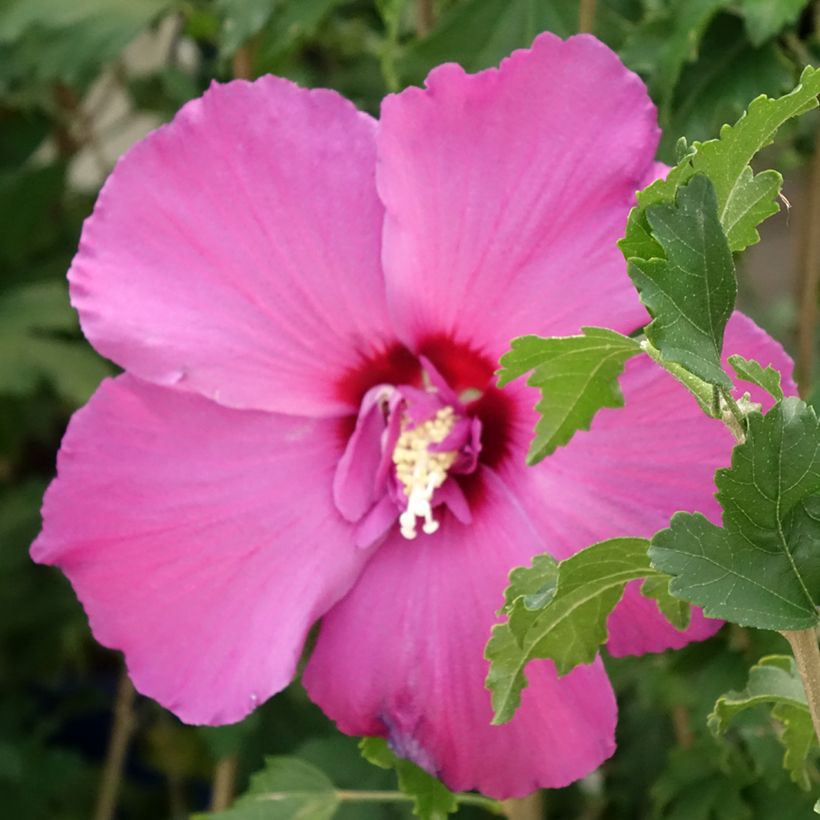

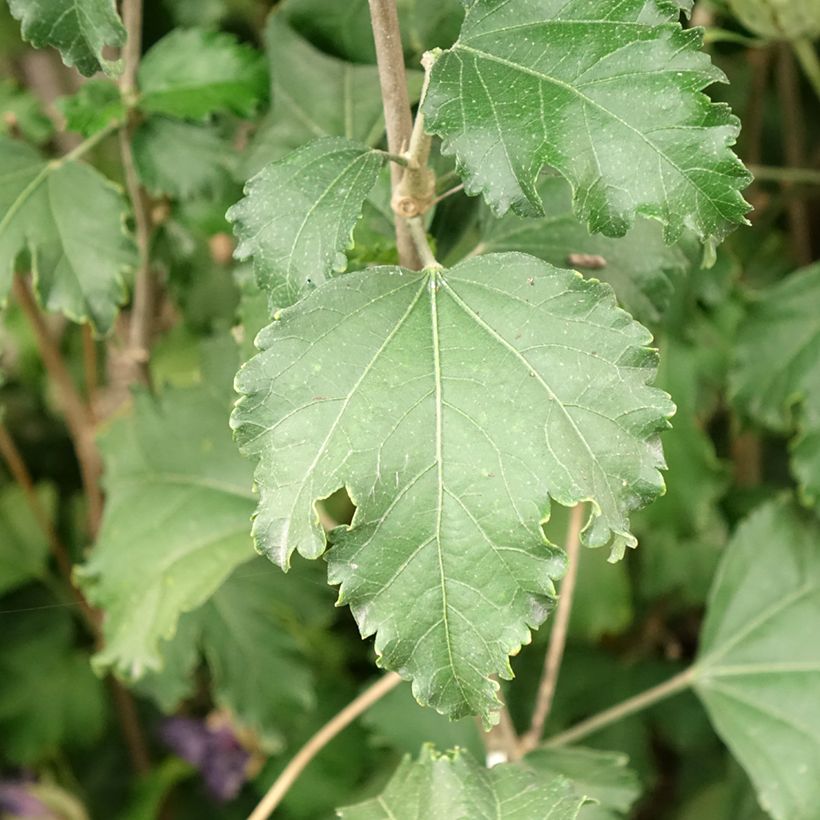

Plant habit
Flowering
Foliage
Botanical data
Hibiscus
x syriacus
Sangria
Malvaceae
Common Hibiscus, Rose of Sharon, Syrian ketmia, St Joseph's rod, Garden Hibiscus
Cultivar or hybrid
Planting and care
Plant Hibiscus syriacus Hibisa Sangria in early spring or early autumn. Container planting is possible all year round. Choose a sunny spot, as full light is essential for generous flowering. Plant it in deep, rich, well-drained soil with a neutral to slightly alkaline pH; in soil that is too acidic or heavy, add organic-lime supplement or well-rotted compost to improve the structure. In the ground, dig a hole twice as wide as the root ball, and position the plant. Water thoroughly after planting and at regular intervals during the first few months to help it establish well. Once established, hibiscus tolerates drought well but will appreciate regular watering during hot spells. Organic mulch can be added at the base to reduce evaporation and naturally enrich the soil.
In containers, use a pot at least 40 cm in diameter, with good drainage at the bottom, and a substrate made of horticultural compost, compost, and coarse sand. Potted hibiscus requires regular watering from spring to late summer.
Hibiscus can be prone to powdery mildew, and black aphids and mealybugs may attack it.
Planting period
Intended location
Care
Planting & care advice
This item has not been reviewed yet - be the first to leave a review about it.
Similar products
Haven't found what you were looking for?
Hardiness is the lowest winter temperature a plant can endure without suffering serious damage or even dying. However, hardiness is affected by location (a sheltered area, such as a patio), protection (winter cover) and soil type (hardiness is improved by well-drained soil).

Photo Sharing Terms & Conditions
In order to encourage gardeners to interact and share their experiences, Promesse de fleurs offers various media enabling content to be uploaded onto its Site - in particular via the ‘Photo sharing’ module.
The User agrees to refrain from:
- Posting any content that is illegal, prejudicial, insulting, racist, inciteful to hatred, revisionist, contrary to public decency, that infringes on privacy or on the privacy rights of third parties, in particular the publicity rights of persons and goods, intellectual property rights, or the right to privacy.
- Submitting content on behalf of a third party;
- Impersonate the identity of a third party and/or publish any personal information about a third party;
In general, the User undertakes to refrain from any unethical behaviour.
All Content (in particular text, comments, files, images, photos, videos, creative works, etc.), which may be subject to property or intellectual property rights, image or other private rights, shall remain the property of the User, subject to the limited rights granted by the terms of the licence granted by Promesse de fleurs as stated below. Users are at liberty to publish or not to publish such Content on the Site, notably via the ‘Photo Sharing’ facility, and accept that this Content shall be made public and freely accessible, notably on the Internet.
Users further acknowledge, undertake to have ,and guarantee that they hold all necessary rights and permissions to publish such material on the Site, in particular with regard to the legislation in force pertaining to any privacy, property, intellectual property, image, or contractual rights, or rights of any other nature. By publishing such Content on the Site, Users acknowledge accepting full liability as publishers of the Content within the meaning of the law, and grant Promesse de fleurs, free of charge, an inclusive, worldwide licence for the said Content for the entire duration of its publication, including all reproduction, representation, up/downloading, displaying, performing, transmission, and storage rights.
Users also grant permission for their name to be linked to the Content and accept that this link may not always be made available.
By engaging in posting material, Users consent to their Content becoming automatically accessible on the Internet, in particular on other sites and/or blogs and/or web pages of the Promesse de fleurs site, including in particular social pages and the Promesse de fleurs catalogue.
Users may secure the removal of entrusted content free of charge by issuing a simple request via our contact form.
The flowering period indicated on our website applies to countries and regions located in USDA zone 8 (France, the United Kingdom, Ireland, the Netherlands, etc.)
It will vary according to where you live:
- In zones 9 to 10 (Italy, Spain, Greece, etc.), flowering will occur about 2 to 4 weeks earlier.
- In zones 6 to 7 (Germany, Poland, Slovenia, and lower mountainous regions), flowering will be delayed by 2 to 3 weeks.
- In zone 5 (Central Europe, Scandinavia), blooming will be delayed by 3 to 5 weeks.
In temperate climates, pruning of spring-flowering shrubs (forsythia, spireas, etc.) should be done just after flowering.
Pruning of summer-flowering shrubs (Indian Lilac, Perovskia, etc.) can be done in winter or spring.
In cold regions as well as with frost-sensitive plants, avoid pruning too early when severe frosts may still occur.
The planting period indicated on our website applies to countries and regions located in USDA zone 8 (France, United Kingdom, Ireland, Netherlands).
It will vary according to where you live:
- In Mediterranean zones (Marseille, Madrid, Milan, etc.), autumn and winter are the best planting periods.
- In continental zones (Strasbourg, Munich, Vienna, etc.), delay planting by 2 to 3 weeks in spring and bring it forward by 2 to 4 weeks in autumn.
- In mountainous regions (the Alps, Pyrenees, Carpathians, etc.), it is best to plant in late spring (May-June) or late summer (August-September).
The harvesting period indicated on our website applies to countries and regions in USDA zone 8 (France, England, Ireland, the Netherlands).
In colder areas (Scandinavia, Poland, Austria...) fruit and vegetable harvests are likely to be delayed by 3-4 weeks.
In warmer areas (Italy, Spain, Greece, etc.), harvesting will probably take place earlier, depending on weather conditions.
The sowing periods indicated on our website apply to countries and regions within USDA Zone 8 (France, UK, Ireland, Netherlands).
In colder areas (Scandinavia, Poland, Austria...), delay any outdoor sowing by 3-4 weeks, or sow under glass.
In warmer climes (Italy, Spain, Greece, etc.), bring outdoor sowing forward by a few weeks.






























